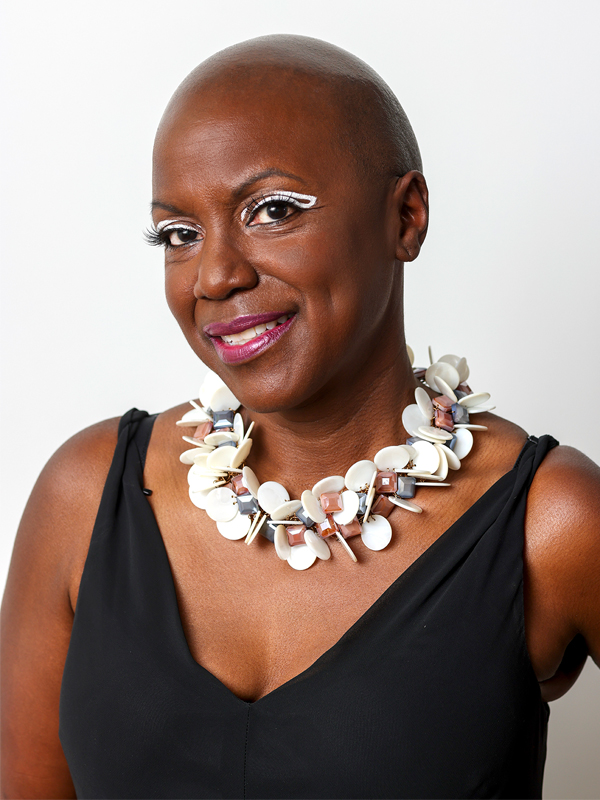Meet 12 people who “found their why” and are making a difference in Kansas City for today and tomorrow.
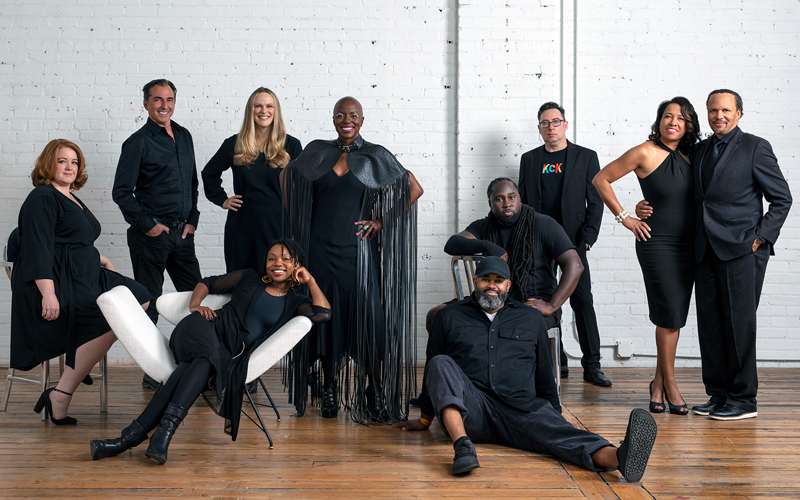
With pinch-me moments and gratitude, this year’s roster of extraordinary men and women feel lucky they get to fill their days with passion and purpose.
Our diverse group shares one common trait: the desire to create, whether it’s something tangible, or something as ethereal as hope.
You may recognize their contributions to Kansas City if you’ve had a cocktail at The Monarch; purchased a piece of R.A.D. jewelry; picked up a novel at Bliss, Books and Wine; read Chocolate Me! to a child, savored a birria taco in Kansas City, Kansas; or sung along to The Doobie Brothers at Starlight.
Others mold future business champions and healthcare leaders with a focus on encouraging talent to remain in or return to Kansas City.
It’s our honor to introduce you to our third year of IN Kansas City magazine’s Innovators and Influencers.
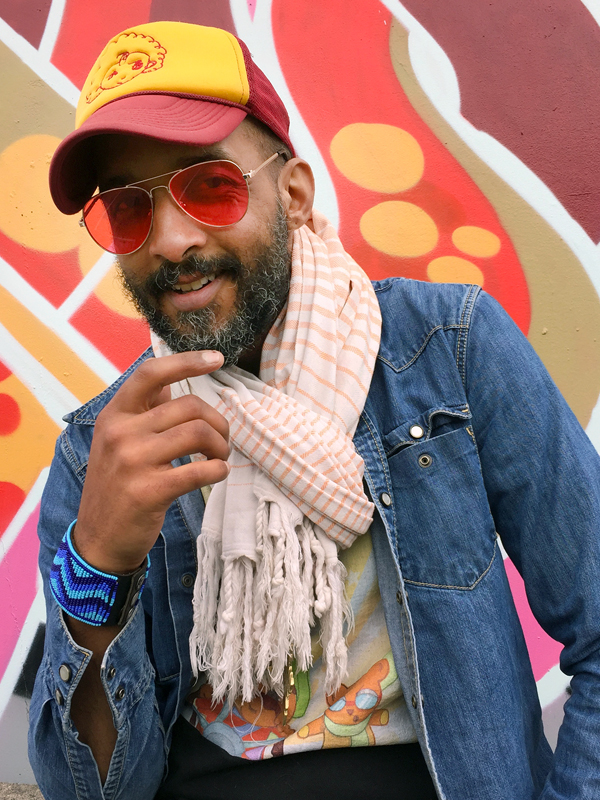
Literature
Shane W. Evans
When Shane Evans woke up one morning in 2020 to find that his book, We March, was on a list of banned books, it didn’t faze him. He wasn’t even sure what that meant. How could some list keep a book from getting into the hands of a reader?
But when the list of shunned literature began to get media attention in March 2023, Evans reflected on how his book, depicting two Black children attending the 1963 March on Washington for Jobs and Freedom with their parents, could be seen as troubling. Published in 2012, Evans used beautiful illustrations and simple, short sentences that wouldn’t overwhelm the readers. Within the crowd, Evans included Dr. Martin Luther King, Jr. and people of all colors. The civil rights movement it depicts was one of harmony and hope.
The book was highly acclaimed. The educational site Teaching Books praised We March for children aged 5 to 9, and it was featured in the Netflix Bookmarks series. Storytellers read the book out loud on YouTube channels. Hundreds of adults shared the pages with children at bedtime. Big kids read it to younger siblings.
If the banning was meant to silence authors, it did just the opposite for Evans. He launched a crowd-funding campaign to get the book distributed. Backers received books, prints of the artwork, and opportunities to buy a book and give one to others. With a goal of raising $1,111, the funding was capped at just over $7,000 with 119 people participating. Evans is in the process of sending books out to sponsors and delivering them to libraries, schools, community centers, and the random person walking down the street.
The support continues. “The publisher’s CEO got fully behind the funding project, and we’ll be able to give out over 700 books,” Evans says. He’ll partner with KidZone, a before-school program for children in Kansas City, Kansas, public schools.
We March shares the banned list with Mixed Me, a book about a biracial boy written by Evans’s friend, actor Taye Diggs, and illustrated by Evans. Their first collaboration was Chocolate Me! about a boy teased for the color of his skin and texture of his hair. His wise mother convinces him he’s sweet and delicious, just like chocolate.
“Chocolate Me! is for anyone who has ever felt different or who has wished to be someone else,” Evans says. “It’s really a love story about all of us. No matter what ‘flavor’ you are, we all need a little boost now and then.” The artwork is joyful and compelling, the words are fun to read but with a powerful, uplifting message.
Evans has also illustrated other children’s books including My Brother Charlie, co-written by actress Holly Robinson Peete about her son who has autism and Coretta Scott King Award-winning author Charles Smith.
Working out of his midtown Dream Studio art space where he engages all his talents as an author, illustrator, artist, songwriter and musician, Evans is busy working on the next project. Himself. After publishing two more books with Diggs, My Friend! and I Love You More Than…, he says, “I needed time to reflect, pull back and do some work on me.”
He committed to drawing and writing each day for a year with the theme, No Complaints. “The process taught me two lessons,” he says. “The first was how many complaints I heard every day. And the second was how grateful I am for all the blessings in my life.” The 365 days of art and words will be the basis for one of three long-form books. “I have 700 pages written and illustrated, and they’ve already raised some eyebrows.”
The other two books relate to a musical he’s been working on called mm2000. “It’s been a long time in the making,” he says, “but I know it will happen.”
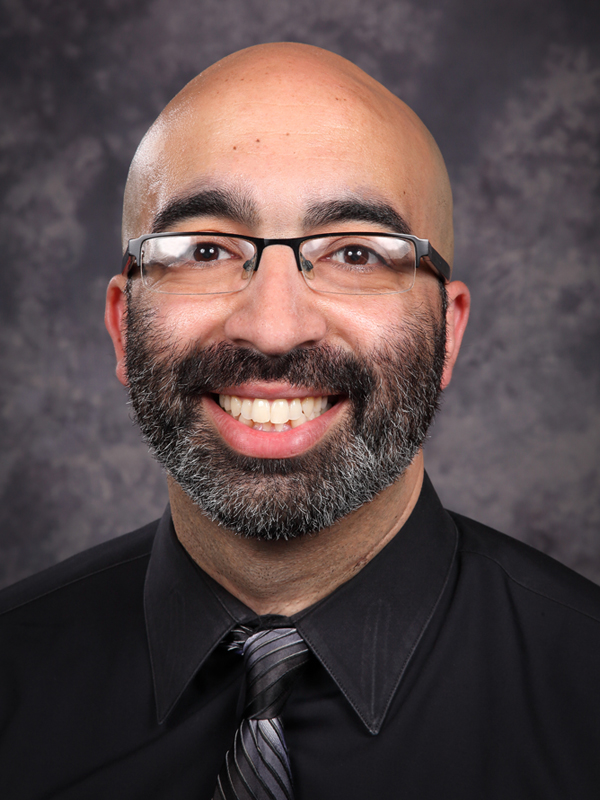
Sports
Mike Talamantes
Mike Talamantes still remembers the first time he saw Park University while interviewing for the job of volleyball coach in 2011. “I was blown away by the beauty of the campus and the fact it overlooked this great downtown,” he recalls. “And I was coming from LA with its picturesque palm trees.”
It wasn’t just Parkville’s picturesque setting that convinced Talamantes to take the job. He was excited about the prospect of continuing the legacy of the men’s volleyball team and building a new tradition for the women’s side. And Park is known for being a magnet for international students, which appealed to him. “We’re able to recruit some of the world’s best players from Serbia, Ghana, and other countries.”
He points to Nada Meawad from Egypt, a player he recruited in 2017 with a full scholarship. She’d been one of the first African teams to take part in the FIVB beach volleyball league and played in the 2016 Rio Olympics.
She continued her path to glory at Park. “We just clicked,” he says. “I asked her what she needed from me as a coach, and she became the most decorated player we’ve had.” Meawad appeared on the 2021 NAIA Women’s Volleyball All-American list for an unprecedented fifth time. Student athletes were granted an extra year to play due to Covid.
Her highlight reels demonstrate deadly spikes and surgical precision with her serves and returns. “She always left it all on the court,” he says. “Win or lose, that’s all I expect of my players.”
Talamantes learned that lesson from his late father, who was his coach in high school, then his mentor when he became the elder’s assistant coach. “I remember being so frustrated after losing a championship game, but my dad came out of the locker room and took me aside. “‘The players weren’t upset,’ he said. ‘They’d just given us everything they had.’”
“My dad had patience, and taught me that as a coach, we also have to do the best we can. We learn. We recruit better. That was 1998, and I still remember that conversation.”
Talamantes got the patience lesson. While other coaches can be seen screaming from the sidelines, he’s described as calm and composed. “My time is in practice,” he says, “to get them ready for the match. Then it’s their time out there. If you’re calm, you can see more of the game so we can all improve during the match and afterwards when we review what went right and what we can improve on.”
After demonstrating his coaching chops for indoor volleyball with multiple coach of the year awards from the NAIA, Southern Conference, and AVCA, he brought up the idea of adding beach volleyball to Park’s sports. “My athletic director thought I was nuts and said, ‘You know we’re in the Midwest, right? There’s no sandy beach to practice on.’”
“But being from California, I love beach volleyball and I convinced Park to let me try.” That was six years ago, and the results have been impressive despite the lack of deep-sand beaches like competitors have in Florida and fewer months to practice. “But we love a good challenge,” Talamantes says. “And as long as the players give me everything they’ve got, I’m good with that.”
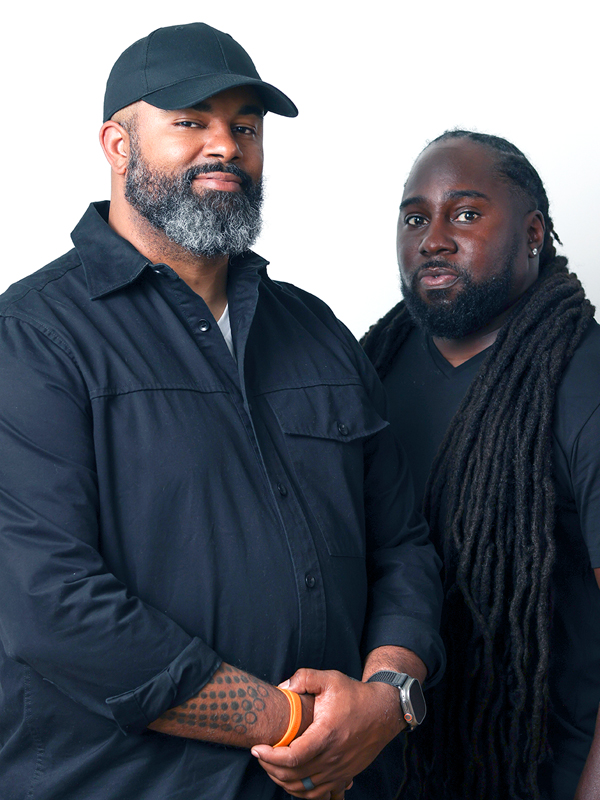
Entrepreneurship
Daniel Smith and Charon Thompson
There’s a saying that it’s lonely at the top. But Daniel Smith and Charon Thompson, who launched The Porter House KC to support budding entrepreneurs, contend it’s lonely at the bottom, too.
“Understanding and dealing with the emotional side of starting a business is often overlooked,” says Smith. “When we started, we were all about hard skills. But soft skills are just as, if not more important. Some of the individuals we help have been through trauma or neglect growing up. We have to initially break them down to get to the root of their insecurities and fear before we build them up.”
Smith and Thompson know the struggles of starting a business; the two met briefly at Linwood’s YMCA, then again at University of Missouri-Kansas City when they pledged the same fraternity. To make money, they started cleaning apartments and worked hard but not necessarily smart. “We didn’t know the first thing about LLCs or finding resources,” says Thompson. “We had to do the research ourselves and now we impart what we learned to help others.”
Smith explains The Porter House KC’s name. “Porter” comes from the person who met people at a train station to help them from where they coming to where they want to go. “House” represents family. And “KC” reflects not just the company’s location but the cofounders’ desire to keep entrepreneurial talent in their hometown where it can help build stronger communities.
That’s the basis for what they call their scale-deep model. “A lot of resources are going into tech ventures, which tend to scale up and leave town. Instead, we want to invest deeper into the Kansas City community.” The Scale Deep Grant, with the support of JPMorgan Chase, provides a total of $30,000 dispersed to three small business owners in Kansas City to help with equipment costs, rental assistance, and general system needs.
How the partnership with JPMorgan Chase came about is an example of a skill that’s integral to any small business: having a strong sales pitch ready to go at any time. Several years ago, Smith and Thompson had a chance encounter with members of the financial services firm. Then, nothing. “Fast forward to 2021,” Smith says, “and after quietly following what we were doing, JPMorgan came to us with an opportunity to support the underrepresented community in Kansas City.” The financial firm recently sponsored Pitch Night where three companies were awarded a total of $15,000.
Another valuable partnership, this time with UMB Bank, supports the PHKC Alchemy Sandbox, which provides funding, mentoring, and creating connections to help young businesses grow and sustain. Twenty businesses are granted up to $5,000 each.
Smith and Thompson are proud of every success their budding businesses achieve. One is Bliss, Books and Wine, launched by two sisters who attended the 15-week Small Business Development Program that centers on marketing and development. The pair also received grant money, which helped them create an inviting bookstore that hosts regular author events and book clubs. Porter House will have its own retail space later this summer to help entrepreneurs get in front of consumers.
With a six-year anniversary approaching, Smith and Thompson are quick to acknowledge the individuals and organizations that believed in their mission, including the Kauffman Foundation, Helzberg’s HEMP program, the Heartland Black Chamber, and the Greater Kansas City Chamber of Commerce, which provides discounted membership rates for alumni. Thompson adds a special thanks to Ron Farmer and Coley Williams, founders of CHES, Inc., a financial empowerment organization, who provided space for their speaker series.
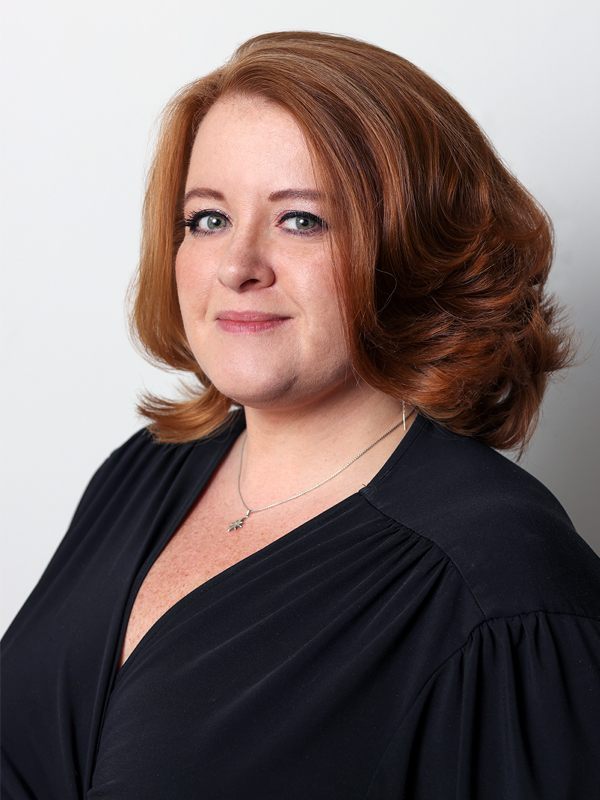
Arts
Lindsey Rood-Clifford
When Lindsey Rood-Clifford was little, she was introduced to performing arts when her family attended musicals at Starlight Theatre. She was hooked. Years later, she used her vocal talents to participate in the theater’s newly formed Blue Star Awards program for high school students.
“I graduated from KU with full intentions to leave Kansas City and move to New York and work in the entertainment field,” she says. She received two offers at the same time; one at what was then the William Morris Agency and the other as a paid intern at Starlight’s Bob Rohlf Internship Program. “I weighed the two opportunities,” she recalled. “I could start in the mail department in New York or learn event management in a theater and city I loved. It was the best decision I ever made.”
She excelled as an intern, became a full-time employee and 16 years later is the theater’s first female president and CEO. She’d proven herself in her previous role as vice president of philanthropy where she grew Starlight’s philanthropic revenue by more than 50 percent and launched its first multi-million-dollar fundraising campaign in almost 20 years.
“The great thing about Starlight is that as an arts organization, ticket sales almost fully support the performance costs. But the leadership team realized that to reach our goals of making the theater accessible for all residents and improve the guest experience, we needed to bring in additional funds.” That major campaign will conclude in 2025.
Fundraising events, including Starry Night at Starlight on July 22, help support the internship program. Meanwhile, organizations including CommunityAmerica Credit Union and Blue Cross and Blue Shield help fund the Blue Star Awards that were so important to Rood-Clifford.
The Starlight Stars of Tomorrow is another opportunity for students to build a foundation of performance skills. Geared toward middle schools, selected students learn the theater process from auditions to performing and are eligible to audition for Starlight productions. And the Vincent Legacy Scholarship awards $2,500 prizes to Black, Indigenous, and People of Color youth in grades six through eight.
Along with student opportunities, Rood-Clifford is proud of Starlight’s expanded “dinner and a show” experience. “People can enjoy food and drinks at our casual concession stands or a more upscale dinner at the Applause Club,” she says. She’s partial to the barbecue buffet; when the chef is smoking meats all day, the aroma is impossible to ignore.
One more point of pride is the emotional aspect Starlight offers. “There’s something about being in the audience at this beautiful outdoor venue, surrounded by other people who love live performances,” she says. “It’s just magical.”
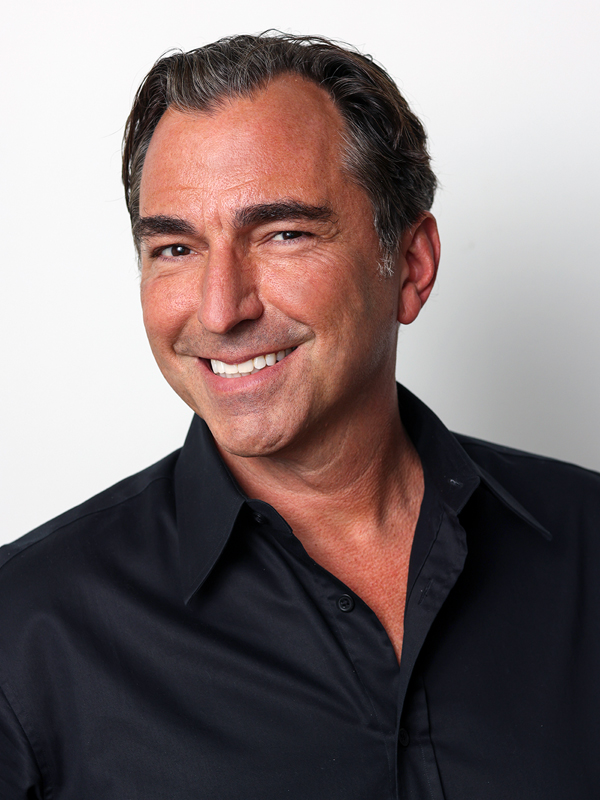
Architecture & Interior Design
David Manica
The Monarch Bar on the Plaza reflects its designer: sophisticated with impeccable styling that would feel at home in any major city around the world. The chic, alfresco lounge at the entrance sets the mood. Indoors, plush velvet seating surrounds a massive marble bar placed in the center of the room rather than against the wall (better to see and be seen). More than 1,000 acrylic butterflies, crafted by KC Art Institute students, adorn a chandelier overhead. Clear, giant ice cubes chill the drinks rather than dilute them, and inventive, Instagram-worthy cocktails are served in distinctive barware. Patrons who prefer a more intimate space can make reservations in The Parlour, a sexy room with dark drapes, leather seating, and candlelight.
There’s even a signature scent of bergamot, musk, and citrus. Will guests notice every exquisite detail? “Some may not pick up on every nuance,” says David Manica, who co-owns the bar with his wife, Noelle, “but they’ll remember how special the place made them feel.” His mastery of experiential design is reflected in their other two bars, Verdigris in Leawood and The Mercury Room on the 14th floor of the Reverb building in the Crossroads. Manica provides a verbal sneak peek (you heard it here first!) of his latest cocktail lounge scheduled to open this fall. Bar Medici will be on the street level of the Reverb, providing an elegant spot for a cocktail and small bites while also serving as overflow when the upstairs bar is full.
While the glamorous bars are Manica’s claim to fame in Kansas City, he jokingly calls them his side hustle. It’s MANICA Architecture that catapulted him to rock-star status as a designer of sports arena and stadium projects around the world. He left HOK Sports (now Populous) after 13 years with no clients and no staff, just a new computer on his dining room table. Noelle had just given birth to their first child but her confidence in his talent was the encouragement he needed.
It was the right move. Since taking that professional risk in 2007, Manica and his team have designed some of the most recognized and innovative facilities in the world, including the Las Vegas Raiders Allegiant Stadium, The Chase Center NBA Arena in San Francisco, VTB Arena Park in Moscow, and the Mercedes-Benz Arena in Shanghai, totaling nearly $15 billion in construction costs. “And we have some truly amazing projects on the boards right now,” he says, “including The Tennessee Titans in Nashville, the Guardians Ballpark Reimagined in Cleveland, the new Inter Miami MLS Soccer stadium in Miami.”
Each will reflect a sense of place and unmatched visitor experience. “Sophistication, class, and drama are all words that I keep in mind when I’m designing a space,” Manica says. “There’s just so much mediocrity out there that it just doesn’t make sense to not try and do something special when given the chance.”
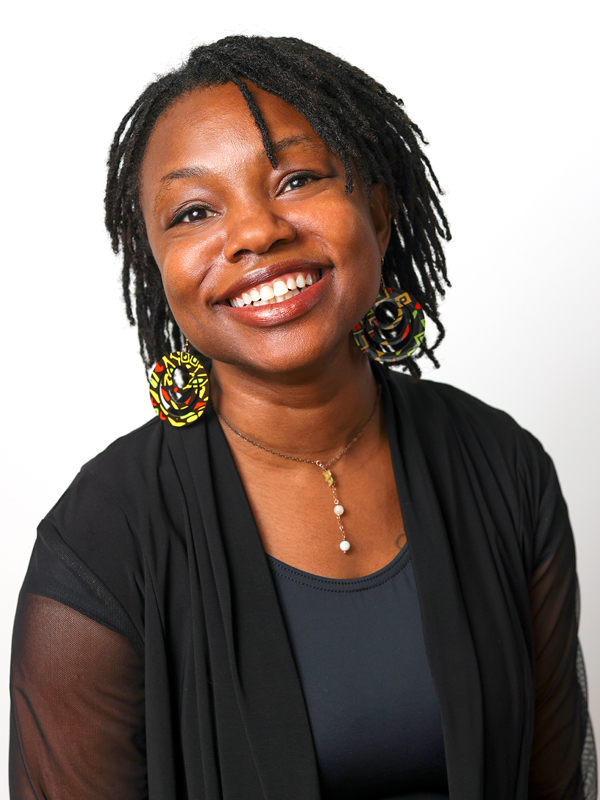
Music
Camry Ivory
“I’ve always been a curious nerd,” Camry Ivory says. That trait led her to combine her talents in singing, songwriting, dance, art, and technology to invent Coloratura, an instrument that lets her paint with music.
Standing in front of an easel, Ivory applies color to a glass, metal, or silk canvas using 12 paint brushes connected to a circuit board by long wires. Each brush is assigned a note in the musical scale and each stroke or dab creates a note on a computer. And, nerd alert, production software loops in multiple musical phrases on top of each other to create additional effects. The result is a new music piece and an original painting.
She gave her first Coloratura performance in July 2015 at Oppenstein Park, as part of Downtown Kansas City’s Art in the Loop program. “I thought it would be a one-time event,” she says, “but the feedback was so positive, I decided to keep tinkering with the process.”
She learned about grant money from ArtsKC but hesitated about applying. “It can be intimidating because there’s so much talent in Kansas City with the Conservatory and Art Institute. I didn’t go to art school, so how audacious, how bold to think I could win.”
Ivory credits the late Paul Tyler with helping her receive a $2,500 grant. “He believed in my project and gave me tips and constant encouragement.” Her story should convince other creators to reach out for help whether financially, having a sounding board, or just a soft place to land during struggles.
Since introducing Coloratura in 2015, Ivory has appeared at the St. Louis Murmuration Festival, the International Folk Alliance Festival, ArtsKC events, and the Kansas City Maker Faire, where she received “Best in Show” recognition. This June was particularly busy with workshops, the Worldwide Make Music Day, and Kansas City Developers Conference’s Kids’ Tech Day.
In fact, kids are often the first to pick up a paintbrush when Ivory takes Coloratura on the road. “I think it’s because kids have lower inhibitions and aren’t scared of what others will think. They just want to play.
“And one or two have used the brushes in innovative ways I hadn’t thought of.” One of the most humbling moments came when a young girl looked up from her painting to tell Ivory, “This helps with my anxiety.” And during a recent collaboration with The Harmony Project, serving K-5 schools, a teacher commented he’d never seen the kids so focused or engaged.
The inventor is looking for other therapy programs through museums, schools, community centers, and workshops. She’s planning a collaboration with the Kansas State School of the Blind, adding textures to the paints so students can feel their work.
And she’s taking it to the next level with an all-battery powered set-up. “I want to remove as many wires as possible to bring in more wonder and magic,” she says. “I’ve also created ways for multiple people to paint at the same time. With this new version, each set of brushes plays another instrument; drums, tuba, violin.”
Ivory will appear with her wonder and magic at an interactive workshop at Johnson County Library–Central Branch on July 29 and perform solo at the Black Box Theatre
on August 1.
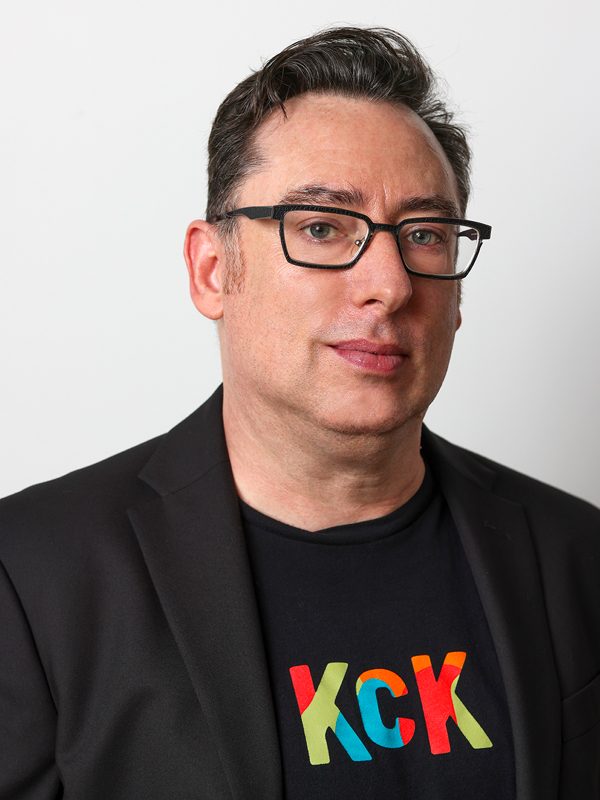
Food & Beverage
Alan Carr
When Alan Carr became executive director of Visit Kansas City, Kansas in late 2019, he knew his top job was to bring this underappreciated city to the forefront and celebrate its many vibrant cultures. What better way to do that than through food. And what better food than tacos?
With almost 60 locally owned restaurants and grocery stores serving the savory handful as well as stand-alone taquerias, Carr and his team conceived the Taco Trail, complete with an online passport where consumers can sign up electronically, view the locations via their phone’s texts or email, check in, and win prizes. The first year’s success amazed even the visitor center team. “We had almost 20,000 check-ins,” Carr says, “and 90 people visited every location.”
Taco Trail 2.0, which launched just before this year’s Cinco de Mayo, may surpass its predecessor. Once a taco fanatic accesses the free passport at kcktacotrail.com, 61 options are on view, along with a description, map, and link to their website if available.
Check-in points can be redeemed for T-Shirts, tortilla warmers, decals, and more. Those who complete the trail by April 15, 2024 are in line for—well, the whole enchilada, including a Taco Party hosted by Visit Kansas City, Kansas, and they will be entered to win the Ultimate Taco Experience.
The Taco Trail has gotten plenty of attention, including a glowing Forbes article calling Kansas City, Kansas, the “official taco capital of the nation.” And Carr expects more media attention; his team just hosted the Midwest Travel Network, whose membership includes writers, bloggers, and influencers from 20 states. “We were hoping to get 90 attendees, but 130 registered,” he says. Must be the aroma of long-simmering pork that brought them in.
The conference has already paid off with mentions on social media including one tweet with a pro tip when following the Taco Trail: “…put on your hiking shoes, or better yet, your stretchy pants and set off on a delicious journey.” The post was accompanied by photos of tasty tacos.
While the thought of chowing down on adobado, al pastor, barbacoa, carnitas, and birria tacos is clearly bringing attention to the “other Kansas City,” Carr says the impetus for the program had less to do with tacos and more about shining the light on the cultural diversity of the eastern side of the region. “A lot of people are aware of the area surrounding the racetrack, Sporting KC’s Children’s Mercy Park and the entertainment district. We wanted to showcase the downtown, midtown, and south regions.
“A way to do that is to tell great stories that differentiate us. We are truly a melting pot of cultures and histories with a population made up of Latinas, Blacks, Indigenous groups, and Eastern immigrants.” That rich cultural diversity will be at the forefront of another online map Carr’s team is working on, the KCK Heritage Trail.
Fashion
Clarissa Knighten
With her dazzling smile and distinctive jewelry line that has a cult following, strangers would never guess that Clarissa Knighten deals with clinical depression. Yet she willingly shares her story to help others struggling with mental health issues. “I say openly that I am a Black woman who left corporate America and used art as therapy,” she says; a role model of someone who sought help and won. What began as drawings turned into jewelry making, by twisting thin wire around and through elements such as buttons to fashion intricate necklaces. They became gifts for friends and family members.
But turn her hobby into a money-making enterprise? “That never occurred to me,” she recalls, “until a guy in an elevator complimented my necklace and offered to buy it right then and there for his wife. He bought the matching earrings, too.” It gave her the confidence to launch R.A.D, which stands for Rissa’s Artistic Design, in 2007.
In 2017, Susan Miller at the Gown Gallery encouraged Knighten to apply to Kansas City Fashion Week. Two months later she lost her job, allowing her to work full-time on her craft. Models who walked the runway in the 2018 spring show were barefoot, not to set a mood but because Knighten couldn’t afford footwear. The audience didn’t care; their eyes were focused on colorful, undulating necklaces woven of pearls and buttons. She sold every design that night and created a new group of enthusiastic collectors, many of whom own multiple pieces.
For that first show, Knighten took a page from her marketing background and created a collection that would appeal to a large audience: simple yet elegant and suitable for dressy or casual outfits.
More dramatic pieces would come later when she was paired with Birdie’s for the West 18th Street Fashion Show in the summer of 2019. “Peregrine (Honig, Birdie’s co-owner who founded the runway show) pushed me to take my expression further,” she says. The result was an over-the-top collection; organic elements like tree branches turned the models into woodland creatures.
And while several people in the audience purchased their favorites, one woman made an acquisition that would elevate Knighten to the next level in her career.
“I got a text from Anna Marie Tutera, a woman who was at the show and was intrigued by my use of tree branches. Turns out she was the executive director of the Kansas City Museum. We met the next week and over smoothies she asked, ‘How would you like to create a large installation at the Kansas City Museum?’”
At the museum, which was concluding a major renovation, Tutera pointed to the second-floor ceiling where Knighten’s art would become a permanent installation. The designer remembers saying those words over and over in her head. Permanent. Installation. Healing at the Roots was on display when the museum reopened in October of 2021.
As Knighten wove together her intricate panel of twigs and branches, she was invited to be part of “Testimony: African American Artists Collective,” the first exhibition of its kind to include only living Black and African American artists.
Along with her expanding exposure, Clarissa is grateful to be the first Black woman to have studio space at the InterUrban Art House. “It’s my community, my support,” she says. “I get such energy from the other creatives here.” And when other artists are dealing with anxiety or self-doubt, Clarissa shares her story of reinventing herself through design.
While she begins to envision her next Kansas City Fashion Week collection, which will feature museum-quality pieces, she continues to create and sell her jewelry at her studio and through her website; at Swanky, a Midtown showroom; and at the Kemper Museum of Art’s gift shop.
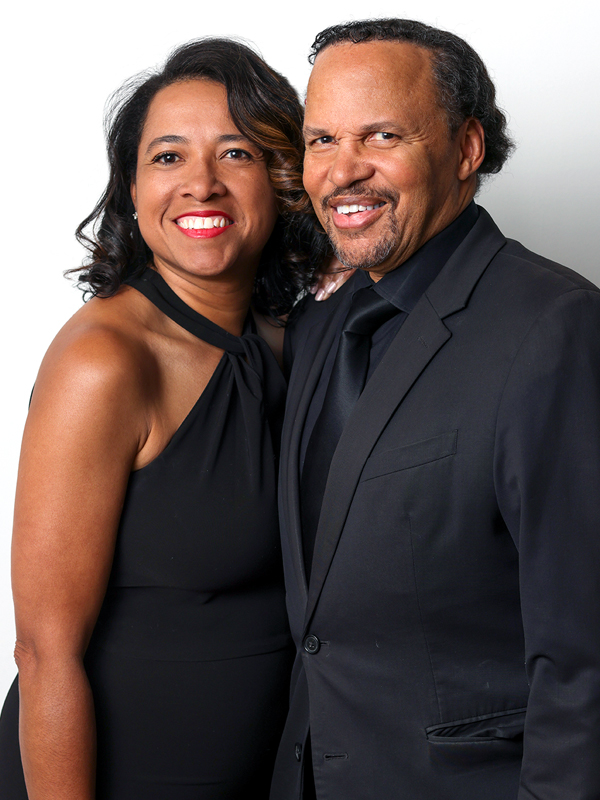
Healthcare
Dr. Michael Weaver & Jamila Weaver
The third grader holds up a sign, “I want to be a neurosurgeon!” while posing for a photo with his new hero, a medical student. Aside from their big smiles, the two share another commonality: they’re both Black.
With the mantra, “If you can see it, you can be it,” Michael Weaver, a retired physician, and his wife, Jamila Weaver, are inspiring students within the Black and Brown communities to envision careers in healthcare through their nonprofit, Mission Vision Project.
While the visit to Brookside Charter School created some pretty cute selfies, it’s just one of the ways the organization is reaching out to recruit and support minority students, with the ultimate goal of having future leaders in the medical field remain in the Kansas City area.
It’s a continuum of Michael’s legacy of mentoring Black medical students through his career in the St. Luke’s Health System; he retired in 2021. These ad hoc meetings started at the University of Missouri at Kansas City, then University of Kansas and Kansas City University schools of medicine, until he envisioned a more structured way to bring minority students together with practicing physicians of color.
That idea became the first Critical Mass Gathering, held 18 years ago. The annual events have expanded to include deans and diversity officers, community organizations, and philanthropists. Students who attend come away with a sense of belonging to a vast network of people who look like them and have lived through the often-difficult journey of obtaining a medical degree as a person of color. These events go beyond just networking; students attend sessions on professional development and financial literacy.
It’s not just the financial aspect that can be a barrier to attending medical school, explains Jamila. It’s the lack of what she calls “social capital—having a family member or close family friend who is a doctor and can help them navigate the road ahead.”
Neither of them had that support as young students. Growing up in Kansas City, Jamila says she never thought she could have a career in the healthcare field. She followed her own path and became a nurse, then a facilitator for diversity, equity, and inclusion training at St. Luke’s Health System.
The couple founded Mission Vision Project KC two years ago to offer support beyond the annual gathering. Through donations, it helps pay for students’ board test preparations and connects high school students with near peer mentors. Pilot sites are Lincoln Prep and Sumner Academy.
Meanwhile, nursing students are introduced to recruiters from Kansas City. At kindergarten through eighth grade, medical students let students try on little white coats and stethoscopes to encourage dreams about a life in healthcare. Programs for early childhood include health and wellness activities and resource materials for teachers and parents.
Michael is encouraged by Kansas City organizations that are stepping up to address the lack of diversity in the physician workforce. He points to the Government Employees Health Association, Inc., (GEHA) Barbara Sheffield Medical Scholarship Fund, created in 2021 to provide full-tuition scholarships for Black and African American students. Eight 2020-2021 scholars will continue their educational journey at KU School of Medicine. Three new scholarship recipients began medical school in July 2022.
“When these men and women graduate, they’ll already have a strong network of other people of color within the medical field. These bonds will, hopefully, encourage them to stay in Kansas City. Our goal is to create a healthier community for everyone,” Michael says.
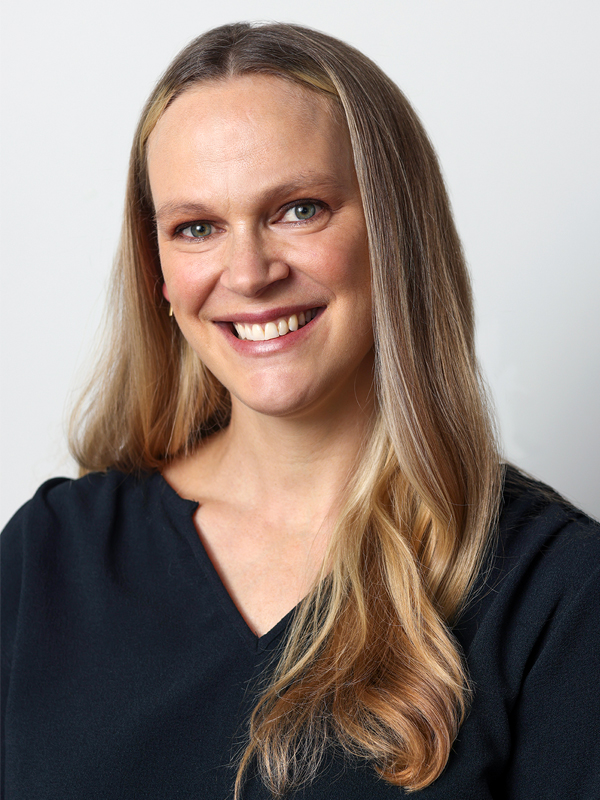
Nonprofits
Erin Jenkins
The mission of the Young Entrepreneur Program, or YEP, is simple. Pair talented, eager-to-learn high-school students with some of the city’s most forward-thinking companies, then encourage them to remain in or return to Kansas City once they graduate college. Erin Jenkins, the first executive director at YEP, had been at the Kauffman Foundation for six years, first in teaching international education, then transitioning to developing entrepreneurs. For her, YEP was the right fit at the right time.
There’s a saying, “It’s not what you know, it’s who you know. YEP develops both areas of that adage. The “what you know” comes from real-life experiences as interns are treated like paid employees during two summer sessions. These young men and women spend days interacting with local business leaders to explore their individual interests and unlock their potential.
As for the “who you know” element, the interns gain a robust network of other alumni as well as contacts within the companies that engaged them. “And that’s part of the beauty of what we do at YEP,” Jenkins says. “We create a sense of belonging from the start, so wherever they go for their higher education, they feel welcome to return to Kansas City.”
She knows the feeling. “After school, I left Kansas City for 12 years, including time abroad. It was hard not to have that network, that sense of community like we have here in the Midwest. Kansas City has a spirit of collaboration and a keen sense of how important philanthropy is to our culture. I’m not sure other cities our size can offer the same values.”
YEP has 15 interns currently, each rotating through startups that buy into the program wholeheartedly. “We partner with companies that value interns. Not only are they tasked with giving these students true opportunities to learn and contribute, but they pay them $10 an hour for 40-hour weeks.” Interns also receive a $2,500 scholarship after completing the program.
Jenkins has been impressed with the caliber of students selected to be part of YEP. “They are so poised during the interview process, which is rigorous. They’ve done their homework regarding the companies on our roster. And they already have natural instincts about the relationship-building process. We just add gasoline to that fire.”
She also says they are masters at networking, working their LinkedIn profiles like seasoned pros. One example is Dacia Hindsman, a 2021 YEP intern. Her LinkedIn banner is “A heart for business” and she has 500+ connections. Along with her studies and an impressive history of entrepreneurship that began with a lawn-care service at age 12, Hindsman displays testimonials from four business leaders she interned with. They are all glowing. Telea Stafford Jackson, the president and brand strategy director at Phenixx Marketing complimented Hindsman for her creativity and commitment and added that she would be welcome to join the team at any time.
Jenkins expects interns to gain valuable experience and connections with the current list of business partners including C2FO; TreviPay; Bunjii; Pipeline Entrepreneurs Fellowship Program; Dimensional Innovations; Super Dispatch; FSC, Inc; Daupler; and Ronawk. “Their time with these companies is exciting and challenging and life changing,” she says. “We’re just proud to be part of their journey.”


